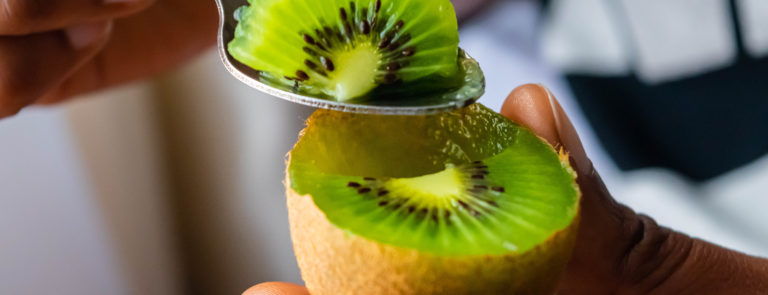Tasting Kiwis: A Savory Journey right into What Do Kiwis Taste Like
Wiki Article
Exploring the One-of-a-kind Features and Interesting Biology of Kiwi: A Comprehensive Research Study
Welcome to the remarkable globe of kiwi! Prepare to be amazed as we discover exactly how kiwis have adjusted to their flightless presence and find their ecological relevance.Physical Attributes
What are the physical features of a kiwi bird? The kiwi bird is a small, flightless bird indigenous to New Zealand. One of the most distinctive functions of the kiwi bird is its lengthy, slender expense.The kiwi bird has an one-of-a-kind quill, with soft, hair-like plumes that resemble fur. These plumes are gray or typically brownish in color, assisting the bird assimilate with its forested environment. Unlike many birds, the kiwi has small wings that are concealed under its plumes and are not functional for flying. Instead, it counts on its strong legs and effective claws for wheelchair.
One more fascinating physical characteristic of the kiwi bird is its nostrils located at the tip of its expense. This adjustment enables them to ferret out insects and worms, their main source of food, in the fallen leave clutter on the woodland flooring (what do kiwis taste like). Additionally, the kiwi bird has huge, rounded eyes that are adjusted for low-light conditions, as they are primarily nocturnal
Feeding Behaviors
To comprehend the feeding practices of the kiwi bird, you need to observe its foraging habits and nutritional preferences. These birds utilize their solid sense of odor to find victim hidden below the surface, and after that use their costs to remove it.Kiwis are omnivorous, meaning they consume both plant and pet matter. Along with bugs, kiwis also eat seeds, berries, and fruits. They have a certain fondness for fallen fruits that are rich in sugars, such as the berries of the shrubby tororaro plant. Kiwis have actually been observed preying on a wide array of plant varieties, indicating their versatility to different food resources.
Remarkably, kiwis do not have a crop, which is a customized component of the digestive system found in many birds. Rather, their food passes straight from the esophagus to the tummy. This may be an outcome of their one-of-a-kind transformative history and environmental specific niche.
Recreation and Reproduction
Now let's dive right into the interesting world of kiwi reproduction and reproduction, structure upon our previous exploration of their distinct feeding routines. They are virginal birds, suggesting they create lasting sets.Breeding season for kiwis typically happens in between June and March. During this time around, the female kiwi will lay one to two eggs, which are unusually big compared to the bird's body dimension. As a matter of fact, kiwi eggs are the largest of any bird symmetrical to body weight. After the eggs are laid, both the man and female take turns incubating the eggs, with each taking changes that can last up to 12 days.
Once the chicks hatch, they are birthed totally feathered and able to see (what do kiwis taste like). They are also fairly precocious, meaning they are able to care for themselves fairly quickly. Even after the chicks have hatched out, the moms and dads continue to supply care and security for them till they are completely independent, which can take a number of months.

Adaptations to Flightless Existence
As a flightless bird, the kiwi has undergone a number of modifications to its makeup and actions that allow it to thrive in its special atmosphere. Unlike other birds, kiwis have tiny, vestigial wings visit this page that are practically worthless for flying.An additional adjustment that kiwis have developed is their solid legs and feet. The kiwi's legs are positioned and muscular far back on its body, supplying it with a reduced center of gravity and optimum balance.
In order to this survive without the capacity to fly, kiwis have actually additionally developed a keen sense of smell. Their long, slim beaks house extremely sensitive nostrils, allowing them to identify bugs and worms beneath the forest floor. This exceptional adaptation helps kiwis situate food sources and keep a balanced diet plan.
Ecological Significance
The environmental significance of kiwi depends on their function as vital seed dispersers in their indigenous environment. As they relocate via the forest floor, kiwi forage for pests, worms, and a range of plants. In the process, they consume fruits and berries, which contain seeds. These seeds then pass with the kiwi's digestive system unhurt and are later dispersed with their feces. This distinct procedure aids in the all-natural regrowth of woodlands.The kiwi's capacity to spread seeds is important for preserving the biodiversity and balance of their community. By spreading out seeds across various locations, they contribute to the growth and wealth of various plant varieties. In turn, these plants offer food and sanctuary for various other animals, producing a web of interdependencies within the environment.
Additionally, kiwi play a crucial role in controlling the population of certain plant types (what do kiwis taste like). Some plants generate a too much variety of seeds, which can lead to congestion and minimal sources for other plants. By consuming and dispersing these seeds, kiwi aid regulate the growth of such plants, making certain a much healthier and a lot more diverse ecological community
The environmental relevance of kiwi prolongs past their role as seed dispersers. Their tunneling behavior also adds to dirt oygenation and nutrient recycling, improving the total wellness of the forest flooring. Furthermore, their feeding routines can assist manage insect populations, reducing the danger of insect break outs that could harm vegetation.
Verdict
In verdict, checking out the unique qualities and interesting biology of kiwi exposes its physical attributes, feeding practices, recreation and breeding patterns, along with its adjustments to a flightless presence. With its distinctive attributes and eco-friendly importance, the kiwi works as an exceptional instance of nature's variety and adaptation. By appreciating the kiwi and recognizing's function in its environment, we more can further promote conservation initiatives to make sure the conservation of this exceptional varieties for future generations.
Report this wiki page